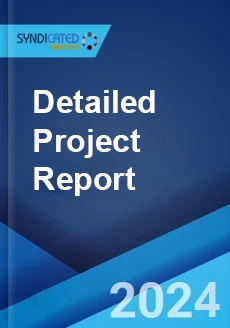
Hematology Analyzers Market: Global Industry Analysis, Market Size, Share, Trends, Application Analysis, Growth and Forecast, 2022-2027
“Global Hematology Analyzers Market: Global Industry Analysis, Market Size, Share, Trends, Application Analysis, Growth and Forecast, 2022-2027” provides a deep and thorough evaluation of the global hematology analyzers market. Hematology analyzers are computerized, specialized machinery that counts the number of red and white blood cells, hemoglobin, blood platelets, and hematocrit levels in a blood sample. They are made up of various analytical molecules with distinctive sample preparation processes and consist of programmable automated alarm systems for displaying results outside the reference range. Hematology analyzers are used to detect, monitor diseases, prognosis, and screening. Some of the common users of hematology analyzers include hospitals, research institutions, and clinical laboratories. In recent years, hematology analyzers have gained traction due to their extensive utilization against numerous blood-related diseases, including blood cancer, hemophilia, blood clots, anemia, leukemia, malignant lymphomas, and blood transfusion.
One of the primary factors driving the market is the rising incidences of blood disorders such as blood cancers, hemorrhagic conditions, anemia, and blood infections. Additionally, the utilization of hematology analyzers for testing and monitoring patients suffering from coronavirus disease (COVID-19) without spreading the virus is propelling the market growth. Other than this, with the rising consciousness among the masses to control chronic diseases, the healthcare sector is extensively focused on the early detection and cure of such health conditions, consequently creating a positive market outlook. Besides this, advancements in blood markers have escalated the demand for hematology analyzers. In line with this, the increasing number of blood donations and blood disorders, such as hereditary spherocytosis, cytochemistries on blood and bone marrow, and identification of abnormal hemoglobin, is catalyzing the market growth. Moreover, technological advancements in several areas, such as pharmacogenomics, hemoglobinopathies, bleeding disorders, stem cell research and proteomics, are anticipated to provide a positive thrust to the market. Other major growth-inducing factors include the widespread adoption of POC testing hematology analyzers in emerging nations, the availability of a wide range of services from hematology providers, expanding disposable income levels, and the rising preference for automated hematology instruments.
Beginning with a global overview, the report explores the dynamics that have a strong influence on the hematology analyzers market and can also impact its future growth. Taking 2021 as the base year, the report covers the historical market scenario from 2016-2021 and provides forecasts till 2027. This includes the study of value and volume trends and pricing history. Growth-inducing factors, market restraints and recent developments have also been analysed in the report in order to provide deeper knowledge about the industry. On a regional basis, the report examines the hematology analyzers market in North America, Europe, Asia-Pacific, Latin America and Middle East & Africa. For each of these regions, the report studies the hematology analyzers market in detail for the latest trends, outlook and opportunities.
The report analyses the competitive structure of the hematology analyzers industry and provides the profiles of major players operating in the market. The price margins for the products, along with the various success and risk factors for manufacturers, have also been covered in the report. Moreover, in order to determine market attractiveness, the report analyses the hematology analyzers industry along the parameters of Porter’s Five Forces model. This model examines the degree of competition in the hematology analyzers industry by analysing the threat posed by new entrants and substitutes and the bargaining power of suppliers and buyers. SWOT analysis of the market has also been presented in the report, which highlights the strengths, weaknesses, opportunities and threats pertaining to the hematology analyzers industry. Furthermore, the value chain analysis of the hematology analyzers industry has also been covered in the report. This comprises all the activities in the value chain, such as the procurement of various raw materials, manufacturing, sales and distribution.
Key Segments and Highlights of the Global Hematology Analyzers Market
- Historical and current scenario
- Trends and developments
- Market forecast
- Price analysis and forecast
- Porter’s five forces analysis
- SWOT analysis
- Value chain analysis
- Market Breakup by Type
- Market Breakup by End-Use
- Market Breakup by Region
- North America
- Europe
- Asia-Pacific
- Latin America
- Middle East & Africa
- Key players
The report is a result of exhaustive primary and secondary research undertaken by analysts having years of experience in the Hematology Analyzers Industry. All the qualitative and quantitative aspects of the industry have been covered and the collected data has been analysed and presented in the form of easily comprehensible charts, graphs and tables.
Purchase Options
Ask For Customization
Personalize this research
Triangulate with your own data
Get data as per your format and definition
Gain a deeper dive on a specific application, geography, customer or competitor
Any level of personalization
Get in Touch
Call us on
US: +1-213-316-7435
Uk: +44-20-8040-3201
Drop us an email at
sales@syndicatedanalytics.com